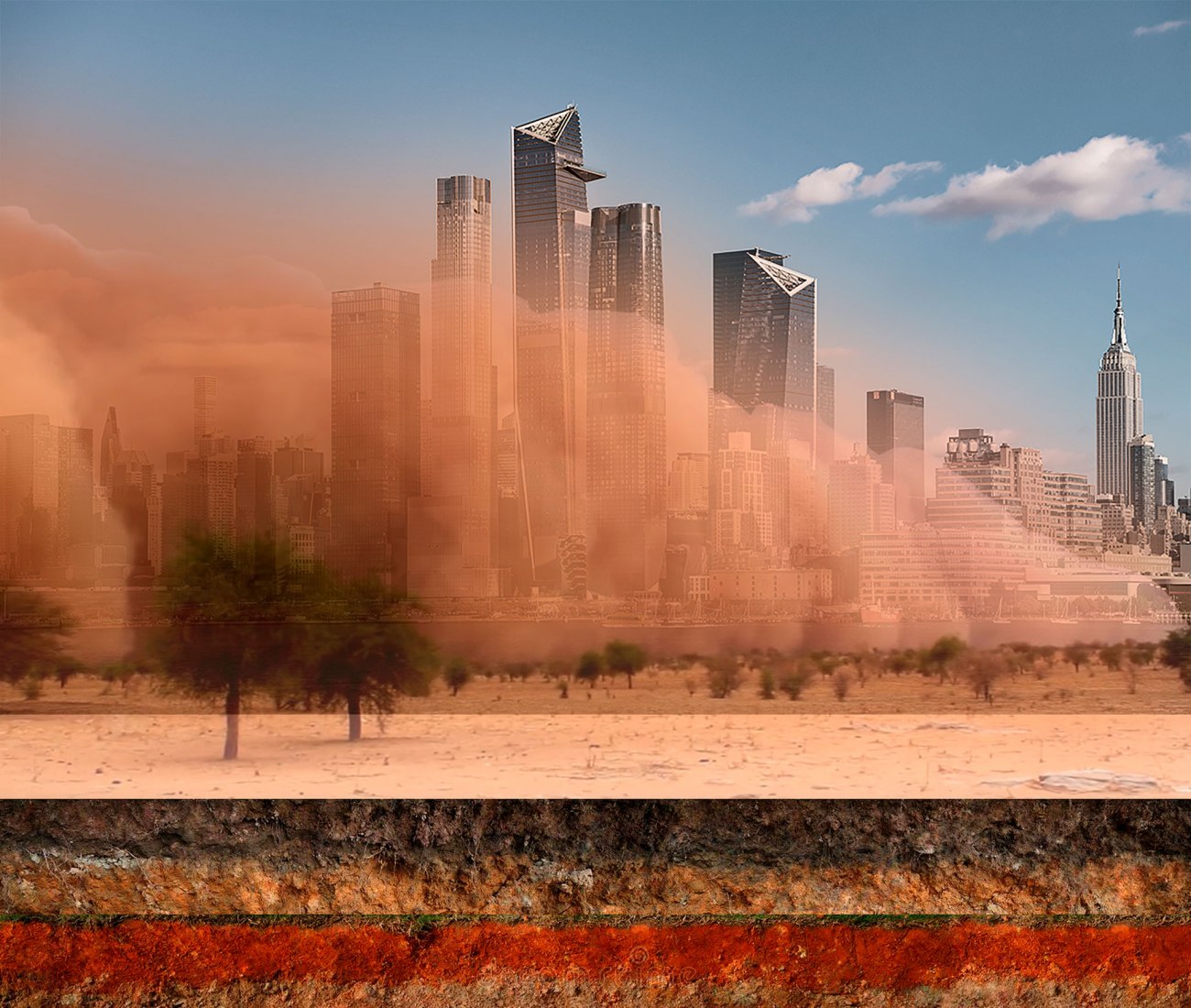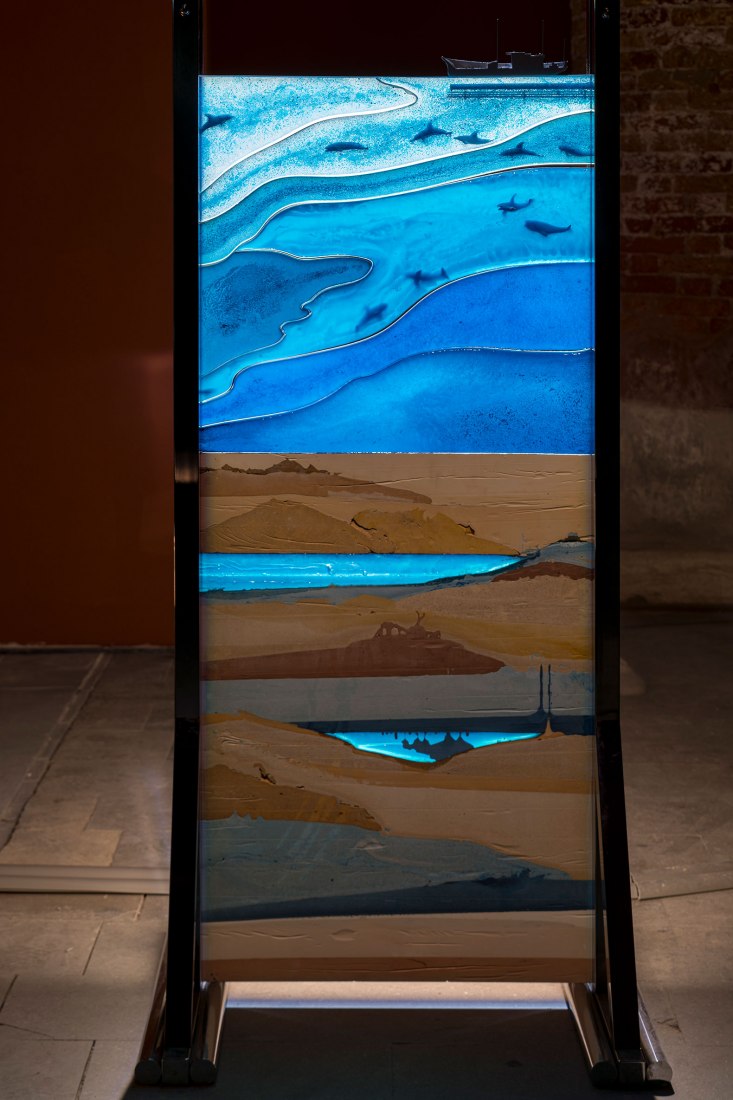The brightness of the buildings is related to the exploitation of Xholobeni deposits, the materials used for the projection of this architecture come from titanium. Extraction of this material makes the sand light and volatile, making the land unfit for agriculture or life. This factor forces communities and ecosystems to migrate and die.
The inhabitants of Xholobeni mobilize to fight for their rights and recover life from their lands, the town resists' extraction thanks to songs that speak of the relationship they have with the ecosystem that surrounds them.
The exhibition presents us with the two worlds and the consequences of exploiting the land. It seeks to provide material and social environments for care and resistance to extractivism.


XHOLOBENI YARDS. Titanium and the Planetary Making of SHININESS / DUSTINESS by Andrés Jaque / OFFPOLINN. Photograph by Miguel de Guzmán.
Project description by Andrés Jaque / OFFPOLINN
"XHOLOBENI YARDS. Titanium and the Planetary Making of SHININESS / DUSTINESS" is a research-based installation presented at the Arsenale of the 18th Venice Architecture Biennale curated by Lesley Lokko. It is a collective effort by a network of activist and community representatives from Xholobeni (South Africa), experts in seismographs and transduction from Poland, researchers, sound editors, prop makers and the New York and Madrid teams of the Office for Political Innovation led by Andrés Jaque; to intervene the very problematic addiction to shininess in architecture now. This transnational distributed alliance has been needed to respond to a reality that gains its extractive capacity from its geographical and scalar distribution.

XHOLOBENI YARDS. Titanium and the Planetary Making of SHININESS / DUSTINESS by Andrés Jaque / OFFPOLINN. Photograph by Miguel de Guzmán.
The shininess of the Hudson Yards in Manhattan is the result of titanium made coatings, being applied on self-cleaning glass and facades to enact the immutability of corporate global hegemonies, both aesthetically and through societal, material and ecological extractivism. The shininess of the global north is at the expense of Xholobeni, a small area on the East Coast of South Africa, where titanium can be found. By removing the titanium from the sand in locations like Xholobeni, the sand becomes light and volatile, making dusty the sites of extraction. Dustiness affects humans’ and more-than-humans’ health, makes farming impossible and, ultimately, forces communities and ecosystems to migrate and die. But the Xholobeni people resist extraction by singing together songs where they celebrate their entanglement with lands and ecosystems. This installation mobilizes architecture’s capacity to allow human bodies to feel the violence other bodies sense through human extractivism and to provide material and societal settings for mutual care and resistance to extractivism. The dissident temporary, ecological and spatial constructs these songs are part of, are the architectures where the future, a desirable future, resides.


































